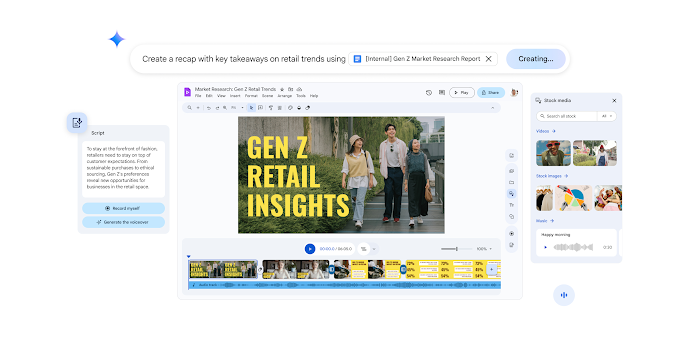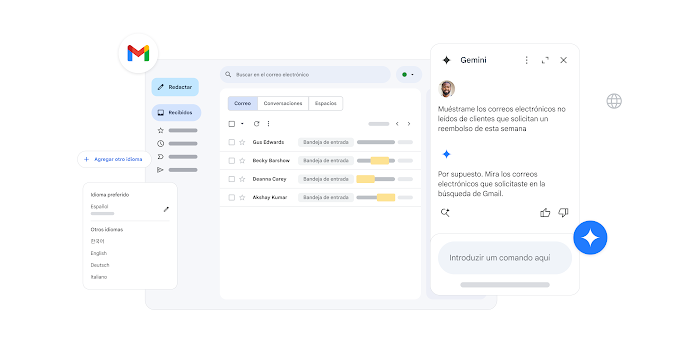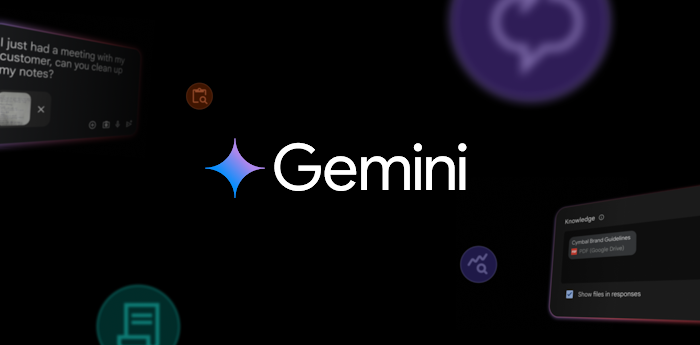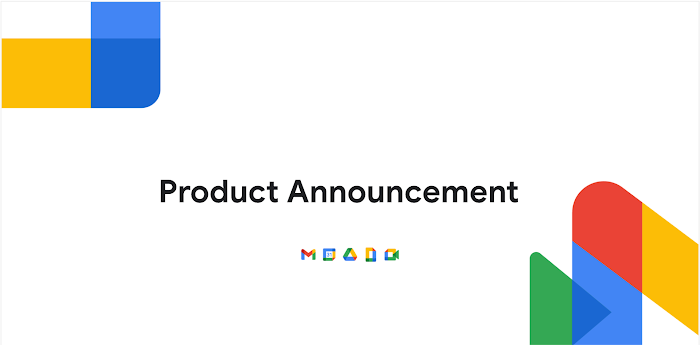Year in Review: 7 Workspace innovations transforming how organizations work
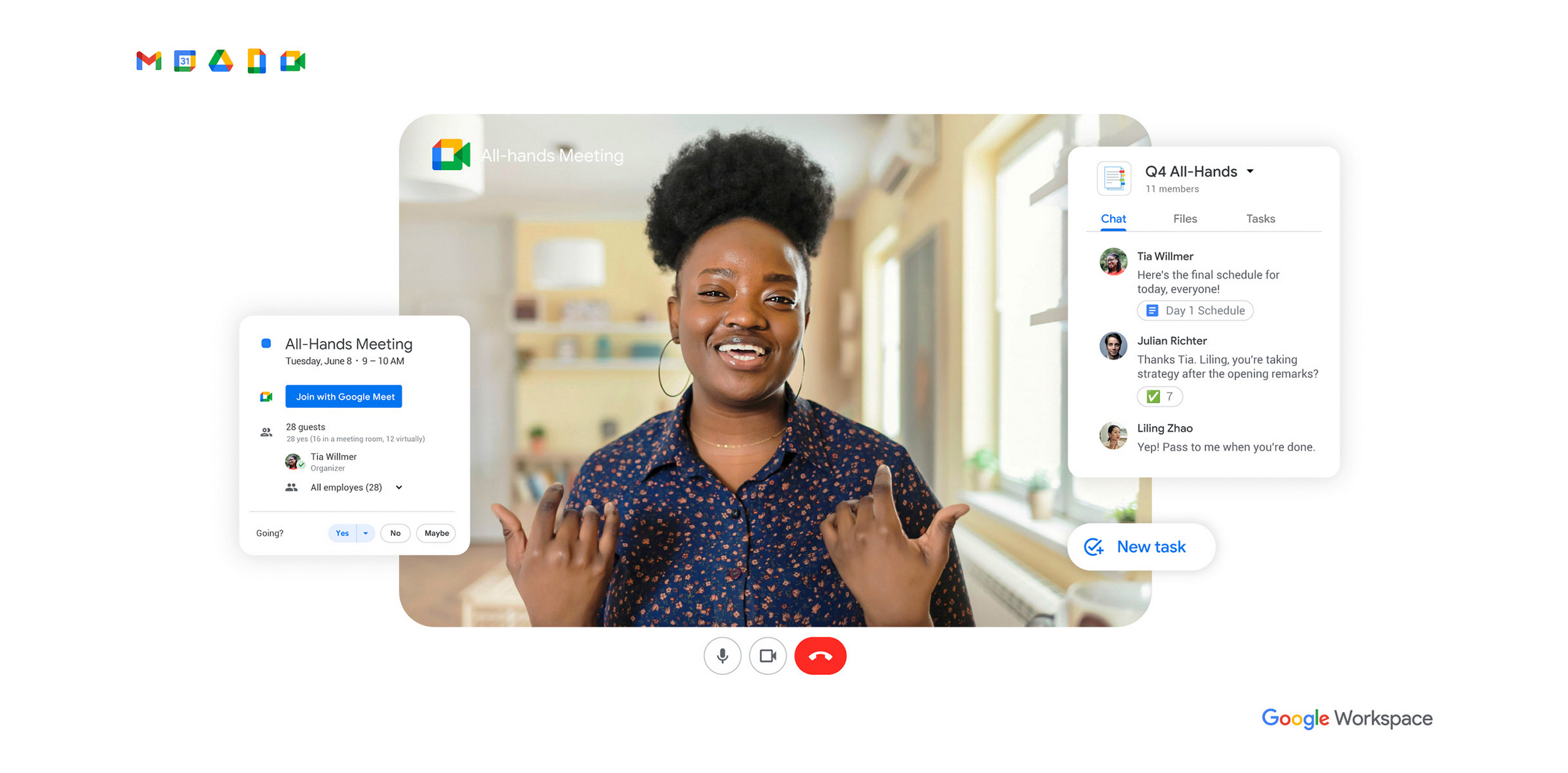
Johanna Voolich Wright
Vice President, Product, Google Workspace
Google Workspace Newsletter
Keep up with the evolving future of work and collaboration with insights, trends, and product news.
SIGN UPIn 2022, our customers inspired us to deliver more than 300 new features to help them accomplish their goals. Whether for a global airline like Korean Air, a digital disruptor like Wayfair, or a large public sector customer like the U.S. Army, we have been focused on helping employees create together, connect more meaningfully, and make the most of their time—all while ensuring data and users stay safe.
We love hearing how our global customers—from Seoul to Seattle to Stockholm—are using Workspace to get things done. Here are 7 Workspace innovations transforming how they work.
1. Extending the power of smart canvas so you can create together and get more done
Digital collaboration shouldn’t require switching between tools and tabs all day long. Surfacing the right information and people in the flow of work can make all the difference, which is why we continue to invest in smart canvas to power next-generation collaboration. It’s been easy to collaborate and co-create with others in Google Docs since the beginning, but smart canvas takes it to the next level by capturing ideas and turning them into action. A simple @-mention in Docs, Sheets, or Slides brings in the right people and data to create an intelligent workflow—all without switching apps.
This year, we announced that we’re extending the power of smart canvas to third-party apps, so users can engage with rich data from Asana, Atlassian, Figma, Salesforce and other partners without leaving Workspace. We also brought smart chips and a timeline view to Sheets, transforming a simple spreadsheet into a powerful dashboard for project tracking, with all the right people, data and insights in one place.
2. Making hybrid more human to foster connection and relieve digital fatigue
Millions of organizations around the world have settled into hybrid work, but they’re discovering significant gaps between employees in the office and their remote colleagues. As a result, many workers feel disconnected—both from their organizations and each other. This year, we invested in collapsing the boundaries across locations and devices with immersive connections, so your team can feel like they’re physically together, even when they’re apart.
To foster expression and connection in video meetings, we announced speaker spotlight in Slides in October, which brings the story and the storyteller together by placing the presenter’s video in Meet directly within their content. And to ensure that everyone can participate fully in a hybrid meeting—no matter where they join from—we’re bringing companion mode to smart phones, giving in-room attendees a second-screen experience from their phones for chat, hand-raising, and more, while leveraging the meeting room’s audio and video. We’re also bringing adaptive framing to AI-powered cameras from Huddly and Logitech so that everyone in the conference room can be seen clearly by their remote teammates.
3. Making it easier for everyone to be seen and heard—from anywhere—for more meaningful connections
In the new world of work, it should be easy for every employee to be seen and heard, no matter where or how they work. It shouldn’t matter whether they’re joining a meeting from a noisy airport or a dimly lit coffeeshop, or with a spotty WiFi connection. That’s why we continue to ensure consistency of experience across Workspace, especially in Google Meet, so that everyone can show up the way they want.
This year, we launched portrait restore, portrait light, and automatic de-reverberation to help people on the go, or with mediocre webcams or WiFi connections, so they can still be seen and heard—even shine—during Meet video calls. We also added automatic video framing to Meet, so you’re front and center in your video tile before you join a meeting. And to help global teams connect in their language of choice, we’re rolling out auto-generated captions to Google Meet in multiple languages.
4. Finding and acting on the info that’s most important to you—with help from Google AI
Staying on top of the vast amount of information that flows across our desks and phones can be a daily challenge. For documents, it’s hard to know which ones are worth a deeper read or how to quickly grasp the highlights. This year we launched auto-generated summaries in Docs that provide a brief overview of the main points in a document, so you can quickly parse the information that matters and prioritize where to focus. And we brought that same approach to conversation summaries in Chat, providing a helpful digest of conversations you might have missed.
And to make it easier to keep up with meetings, we’re using Google’s industry-leading AI to generate automated meeting transcriptions in Google Meet (English is live; French, German, Spanish, and Portuguese coming in 2023). Automatic transcriptions are a quick and easy way for those who couldn’t make a meeting get up to speed, or for attendees who want a record of the meeting’s conversation and outcomes.
5. Getting more done with a single, unified view in Workspace
Employees, especially knowledge workers, spend a big part of their day moving between email, chat, and virtual or hybrid meetings—and all that context switching takes a toll. This year, to help people get more done from one place, we brought Gmail, Chat, Docs, and Meet together into a single, unified view (with options to customize based on your personal workstyle) and we made Gmail more helpful than ever.
Even after 18 years, Gmail continues to strengthen as the world’s most popular email platform, and this year we brought faster searches to inboxes everywhere with search chips that filter and sort results.
We also added new capabilities to spaces in Google Chat as a dedicated place for teams to share ideas, discuss topics, collaborate on documents, and assign tasks. To help organizations keep their employees connected—both with each other and with the broader organization—we made spaces more discoverable, extended membership within a space to 8,000 people, and are delivering broadcast-only announcement spaces in early 2023.
6. Working safer while meeting compliance and privacy requirements
As the world of work continues to evolve, security and privacy have never been more important. They are the foundation for all collaboration, whether it’s inside the office or across distributed teams. We protect Gmail users from nearly 15 billion unwanted messages a day, blocking more than 99.9% of spam, phishing, and malware. Done right, security can feel invisible to employees and effortless to IT, giving everyone more time and attention for higher value work.
This year, to help global organizations meet compliance and privacy requirements, we announced sovereign controls, giving organizations in the EU and elsewhere new capabilities to control, limit, and monitor transfers of data across regions. We also launched new Access Approvals so organizations can create fine-grained rules for access to covered data. And we announced client-side encryption for Gmail and Calendar, adding to the CSE capabilities already available in Drive, Docs, Sheets, Slides, and Meet.
We made it easier for users to comply with their organization’s data sharing policies, with data loss prevention for Chat (a real-time nudge if you share the wrong file) and new trust rules in Drive for granular control over internal and external sharing.
7. Bringing the other apps you love into Workspace to create a single hub for work
Nobody wants to be locked into a single app or closed environment. Organizations and their employees want easy and secure access to email, chat, video conferencing and more, and they expect those tools to work seamlessly with other critical apps they use to stay in touch with customers, visualize data, manage projects, and build creative designs.
This year, we continued to make Workspace the most open and extensible productivity platform for users worldwide. We further opened up our environment with APIs for Meet and Chat and the Meet add-on SDK (both in testing and rolling out in early 2023), allowing developers to enrich the Meet experience by connecting it securely with third-party apps or apps they build themselves. We also announced an AppSheet and Google Chat integration so that people can create and interact with custom AppSheet apps right within Chat. We also continued to expand smart chips to our ecosystem of partners, allowing our users to add even more rich data, more context, and critical information right into the flow of their work.
This year’s innovations help organizations get more done and achieve their goals, while keeping their people meaningfully connected so they can create, build, and grow together. As we head into 2023, we’ll continue to listen to our customers’ needs and deliver new experiences to help them be successful in the evolving future of work.
To make it easier for employees to choose their own productivity tools within their existing environments, we launched our no-cost Google Workspace Essentials offering earlier this year. Now, any user can bring modern collaboration and Workspace to their teams at work, even if their larger organization hasn’t made the shift yet. With Essentials Starter, you can host secure video meetings, chat with teammates, and collaborate across Docs, Sheets, and Slides. And you can do it all while working with existing tools and without file conversions: store, share, or co-edit 100+ file types, including Microsoft Office documents and PDFs, without converting a single file.
If you’re ready to make the switch from legacy productivity tools and experience the Workspace difference, it’s easier than ever to get started.
